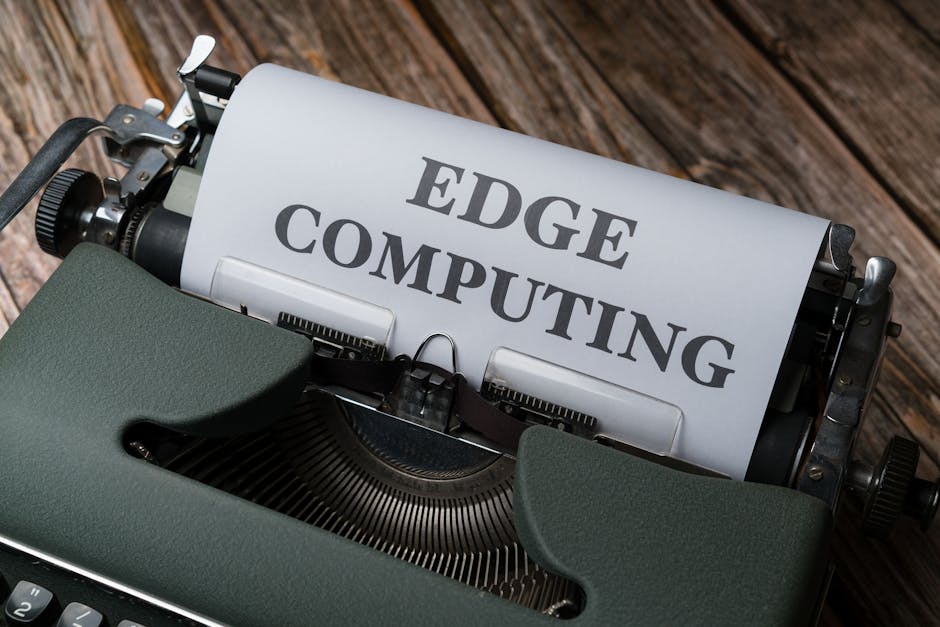Introduction: Why Edge Computing Matters Now
Edge computing is about processing data closer to where it’s created—on the device itself, or nearby. Instead of sending everything to the cloud, your phone, smart speaker, or even your fridge does more of the thinking on its own. It’s not about replacing the cloud, but about reducing the distance between data and decisions.
Until recently, most data had to make a round trip to massive server farms. That meant delays, potential privacy issues, and big bandwidth demands. But now, thanks to better hardware and more efficient software, devices at the “edge”—the literal edge of the network—are stepping up.
This shift isn’t just about speeding things up for IT departments or streamlining warehouses. It directly affects consumers. Think real-time translation on your earbuds, security cameras recognizing familiar faces instantly, or wearables warning you about health signals without needing to sync to an app. Efficiency, privacy, and performance are all better when your tech can think locally.
Edge computing is already here, and it’s changing the way our devices serve us—quietly, quickly, and without waiting for the cloud to catch up.
The Everyday Tech Getting Smarter at the Edge
Edge computing isn’t just a buzzword tucked away in big tech boardrooms—it’s already in your house, on your wrist, in your car, and in your pocket. Devices that once had to rely on distant servers are now smart enough to handle the job themselves, right where the data is created.
Take smart home gear. Modern locks, lights, and thermostats are quietly learning your preferences and adjusting in real time without routing everything through the cloud. Your living room light knows when you usually dim it, and your thermostat adapts to the rhythms of your daily life—all on-device, all local.
Wearables and health trackers are getting sharper too. Instead of sending every heartbeat to a server, many now deliver real-time insights—like irregular heart rate alerts or sleep pattern tracking—instantly, while keeping your data private and off the cloud.
In your car, edge computing is already at work. Navigation systems recalculate routes faster, adaptive cruise control reacts in milliseconds, and onboard diagnostics are more immediate—all without waiting for cloud servers to respond. In situations where every second counts, edge speeds mean safety.
And of course, smartphones. These are the edge’s poster children—miniature supercomputers running AI models, optimizing battery use, filtering spam, and transcribing speech on the fly. All this happens in the palm of your hand, without needing to ping a server halfway around the globe.
What used to be science fiction is now daily function. Edge computing is already embedded in the stuff you’re using—it’s just doing its job quietly in the background.
Key Benefits of Edge Computing for Daily Use
Edge computing isn’t just another tech buzzword—it actually makes your devices faster, smarter, and more private. Here’s how.
Speed
When devices process data on-site instead of sending it off to the cloud and waiting for a response, everything feels snappier. Your smart speaker responds quicker. Your car makes navigation decisions faster. That’s low latency in action—edge computing cuts the wait time.
Privacy
Since much of the data stays on your device, there’s less risk of it being intercepted or misused in the cloud. Whether it’s your voice commands, heart rate, or GPS history, local processing means fewer third-party eyes.
Reduced Bandwidth
By handling tasks locally, devices don’t need to push every piece of data through your Wi-Fi or mobile connection. That means smoother performance when your network is under pressure, and fewer data spikes for the things that don’t really need to travel.
Resilience
One big win: edge devices keep working even if the internet drops. Your lights still respond, your thermostat still adjusts, and your security camera still records. That independence makes smart tech more dependable, no matter what your connection’s doing.
Together, these benefits make a strong case: edge computing isn’t just a performance upgrade—it’s a functional shift in how everyday tech operates.
Real-World Examples You’re Already Using
Edge computing isn’t a thing of the future—it’s already baked into devices sitting on your desk, in your bag, or on your wrist.
Voice assistants are the most obvious example. Many now detect wake words like “Alexa” or “Hey Google” directly on the device. No need to ping the cloud just to start listening. That means faster responses and more privacy. Same goes for newer cameras. Facial recognition is handled on-board, so your system knows who’s at the door even if your Wi-Fi is crawling.
Fitness trackers have quietly made a serious leap too. Instead of syncing to the cloud and making you wait, they’re now analyzing your sleep stages, movement patterns, and heart rate variability in real time. It’s instant feedback, right on your wrist, no signal required.
Bottom line: if you’ve noticed your gadgets getting faster, smarter, and more responsive without always being online, that’s edge computing doing its thing—quietly, locally, and right where you need it.
The Edge + AI Relationship
AI isn’t just tagging along for the ride—it’s the reason edge computing is exploding. As machine learning models get lighter and more efficient, they can now run directly on everyday devices. We’re talking voice recognition that lives inside your earbuds, computer vision on your doorbell camera, and fitness wearables crunching health data without needing the cloud.
Running AI locally means less reliance on internet connections and huge data centers. No lag waiting for servers to respond. No uploading personal data just to get a basic prediction. This matters in real-world scenarios—think autonomous vehicles reacting instantly or medical devices giving feedback in real time.
Edge hardware doesn’t need to be a beast, either. Low-power chips are handling smarter tasks every day. Combine that with AI optimized for local deployment, and you’ve got tools that learn, adapt, and deliver results even when unplugged. AI is pushing edge devices from passive sensors to active brains.
Challenges Slowing Down the Edge
Edge computing isn’t all upside. The devices we rely on—from smartwatches to home cams—have physical limits. Processing power is tight, especially when running AI on-device. Storage space can fill up fast with real-time data. And then there’s energy: edge devices have to stay efficient, especially when they’re battery-powered. That adds pressure to streamline code and prioritize only what matters.
Security’s another hurdle. The more operations that happen locally, the more targets hackers have at the edge. Unlike cloud centers with hardened defenses, edge devices are often exposed—sitting in homes, cars, even pockets. Each piece of hardware becomes a potential weak link if updates or protections lag.
Then there’s fragmentation. Every brand seems to be doing edge their own way, creating silos of standards that don’t talk to each other. It’s messy. Sensors, chips, OSes, protocols—no universal handshake. That disconnect slows innovation and makes it harder to scale solutions across ecosystems.
For edge tech to fully deliver, the industry has to solve these pain points—not just build smarter devices, but smarter infrastructure to support them.
How It Connects to the Bigger Tech Picture
Bridging IoT, Cloud, and AI
Edge computing isn’t just an emerging feature—it’s becoming the connective tissue of modern technology. It serves as a critical middle layer that links three accelerating trends:
– IoT (Internet of Things): Billions of devices gathering data from the physical world
– Cloud Computing: High-volume data analysis, storage, and orchestration
– Artificial Intelligence: Intelligent decision-making driven by data
Edge helps move processing closer to where data is generated, reducing reliance on distant cloud servers. This shift creates faster, smarter, and more resilient systems.
Driving Autonomy and Responsiveness
By handling processing locally, edge-enabled systems respond more quickly—often in real-time. This responsiveness is essential for technologies that demand speed and precision, such as:
– Autonomous Vehicles: Making split-second driving decisions without cloud delay
– Industrial Automation: Reacting instantly to sensor input to avoid downtime or failures
– Smart Devices: Personal assistants or cameras that deliver rapid, localized AI processing
As devices get smarter, edge computing enables them to act more independently, without waiting on a central server.
The Bigger Frontier: What’s Coming Next
Edge computing doesn’t operate in isolation—it’s a stepping stone to even more advanced technologies.
Explore related frontier tech: Quantum Computing Opportunities and Industry Applications
Quantum computing, for example, could eventually elevate how cloud and edge systems work together, offering unprecedented processing power. For now, edge computing is laying the groundwork for a more efficient and intelligent connected world.
Looking Ahead
5G and edge computing are walking hand in hand into the future. With ultra-low latency and higher bandwidth, 5G removes one of the biggest bottlenecks in edge implementation: data transfer speed. This means quicker decisions, smoother experiences, and smarter devices—from autonomous drones to healthcare monitors that respond almost instantly. The two technologies complement each other—5G moves the data fast, edge processes it close to where it’s collected. Together, they unlock functionality that neither could fully deliver alone.
On the developer side, the tool stack is evolving fast. Frameworks like NVIDIA’s Jetson, AWS IoT Greengrass, and Azure Percept are making it easier to build, test, and deploy edge applications without reinventing anything. Hardware is catching up, too—chipsets with dedicated AI acceleration, lower energy draw, and rugged form factors are no longer enterprise-only options.
What’s clear: we’re only scratching the surface. As more devices get embedded intelligence and more infrastructure supports decentralized computing, the edge will be less of a buzzword and more of a daily reality. Think smarter homes, quicker medical diagnostics, cities that adapt in real time. There’s still a lot to figure out, but one thing’s certain—this ecosystem is just getting started.


 Tyler Mapleronsic, a contributing author at wbsoftwarement specializes in full-stack development and cloud technologies. His articles blend technical expertise with real-world applications, guiding readers through complex coding challenges and innovative software practices. Tyler’s goal is to make technology more accessible and impactful for every developer.
Tyler Mapleronsic, a contributing author at wbsoftwarement specializes in full-stack development and cloud technologies. His articles blend technical expertise with real-world applications, guiding readers through complex coding challenges and innovative software practices. Tyler’s goal is to make technology more accessible and impactful for every developer.

